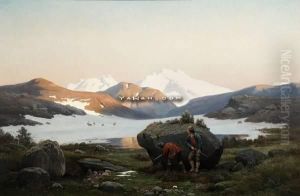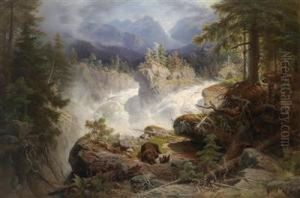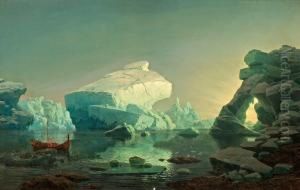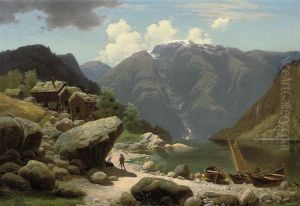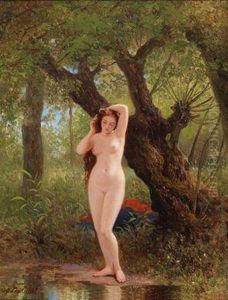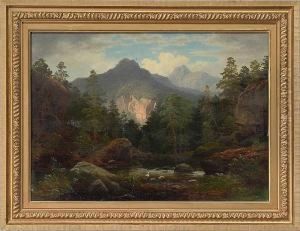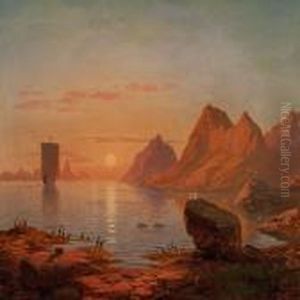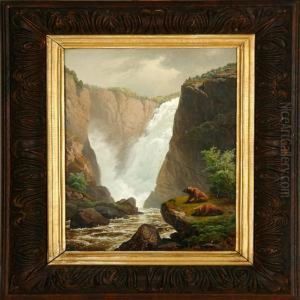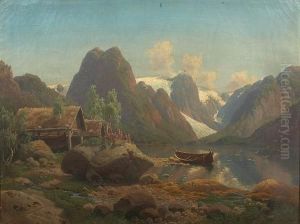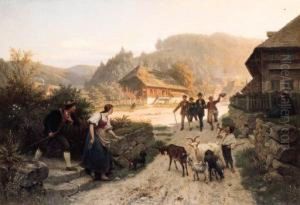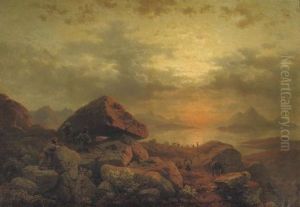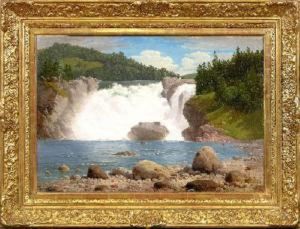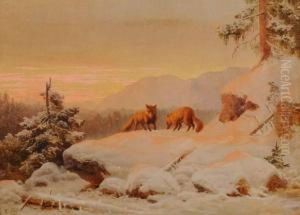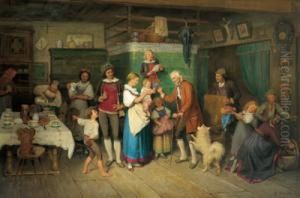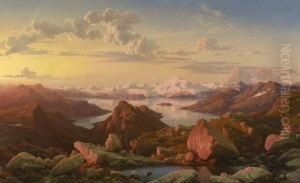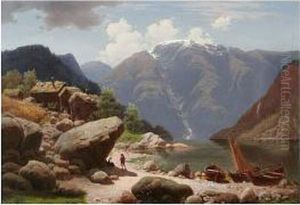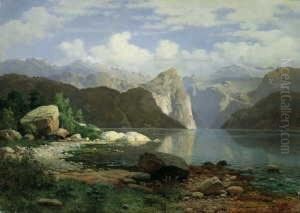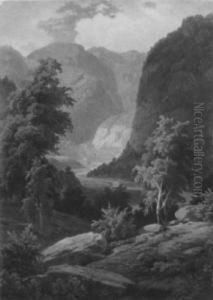Georg-Eduard Otto Saal Paintings
Georg-Eduard Otto Saal was a German landscape painter born on March 23, 1817, in Koblenz, Germany. He was known for his atmospheric landscapes and his skill in depicting the interplay of light and shadow, which was influenced by the Romantic movement in art.
Saal received his early education in the arts at the Düsseldorf Academy, an institution famous for its landscape painting school, which was a major center of the Romantic landscape painting tradition in the 19th century. At the academy, he studied under renowned artists such as Johann Wilhelm Schirmer, who was known for his detailed and idealized landscapes.
After completing his studies, Saal embarked on extensive travels that took him throughout Norway and Russia, where he was inspired by the dramatic natural scenery. His journeys significantly influenced his artistic style, as he began to incorporate elements of the sublime and the picturesque in his work, capturing the raw beauty and power of nature.
Throughout his career, Saal exhibited his works in various cities, including Berlin, Munich, and Dresden. His paintings were well-received, and he gained recognition for his ability to evoke mood through his landscapes. He was particularly adept at rendering scenes of the North, where he captured the unique light and atmosphere of these regions.
Saal's work was characterized by its evocative use of color and meticulous attention to detail. He often depicted scenes with a sense of tranquility and isolation, which resonated with the Romantic sensibilities of the era. His paintings frequently featured mountains, fjords, and waterfalls, all rendered with a sense of grandeur and majesty.
Georg-Eduard Otto Saal's career was tragically cut short when he died at the age of 53 on November 22, 1870, in Karlsruhe, Germany. Despite his relatively short life, his contributions to landscape painting left a lasting impact, and his works continue to be appreciated for their romantic portrayal of nature's splendor.
